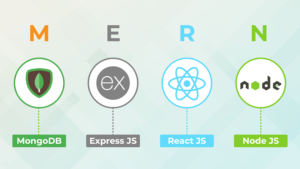Introduction
REST APIs are integral to modern web development, providing a standardized approach for client-server communication. In the MERN stack—comprising MongoDB, Express.js, React, and Node.js—REST APIs facilitate seamless data interactions, enabling efficient CRUD operations and dynamic content updates. This architecture leverages REST principles to create scalable, maintainable, and flexible applications, underscoring the importance of REST APIs in today’s technology landscape. Aspiring MERN professionals can refer to the MERN Stack Certification course for the best guidance.
What Is REST API In MERN Stack?
In the MERN stack, REST (Representational State Transfer) API is a design pattern used to create scalable and stateless web services. MERN stands for MongoDB, Express.js, React, and Node.js, and it utilizes RESTful principles to facilitate communication between the client and server.
REST API in the MERN stack operates primarily through HTTP methods—such as GET, POST, PUT, and DELETE—to interact with resources.
Here’s a brief overview:
- MongoDB: A NoSQL database where data is stored in JSON-like documents. It serves as the data store for the REST API.
- Express JS: A web application framework for Node.js that simplifies the creation of server-side applications. It handles routing and request processing for the REST API.
- React JS: A front-end library for building user interfaces. It makes HTTP requests to the REST API to fetch or manipulate data.
- Node JS: A JavaScript runtime that enables server-side scripting. It runs the Express.js server and facilitates communication with the MongoDB database.

In this architecture, the REST API endpoints are defined in Express.js, handling different HTTP requests and performing CRUD (Create, Read, Update, Delete) operations on the data in MongoDB. React communicates with these endpoints to dynamically update the user interface based on the server’s responses. One can check various tutorials on How To Become A Mern Stack Developer to learn various skills related to this field.
Key Features And Benefits Of REST API
REST (Representational State Transfer) APIs are widely used due to their simplicity and scalability.

Here are some key features and benefits:
- Statelessness: Each REST API request from a client to the server must contain all the information the server needs to fulfill the request. This means no client context is stored on the server between requests, leading to simpler and more scalable interactions.
- Scalability: Due to statelessness and standard HTTP methods, It can handle large requests efficiently, making them highly scalable.
- Uniform Interface: REST APIs use standard HTTP methods (GET, POST, PUT, DELETE) and standard media types (such as JSON or XML). This uniformity simplifies the integration process and makes it easier to understand and use the API.
- Flexibility: It support multiple formats (like JSON, XML), allowing clients to choose the format they prefer for data exchange. This flexibility enhances compatibility with different client technologies.
- Caching: REST APIs can leverage HTTP caching mechanisms to improve performance by reducing the need for repeated server interactions. Responses can be cached and reused, minimizing server load and improving response times.
- Layered System: It can be designed with a layered architecture where different layers (e.g., load balancers, servers) handle different aspects of the request, enhancing scalability and security.
These features make it a popular choice for building web services and applications that require reliable, scalable, and easy-to-maintain interactions. To learn more about this technology stack, one can check the MERN Stack Certification program.
REST API Use Cases
REST APIs are versatile and are used across various domains due to their simplicity and efficiency.
Here are some common use cases:
- Web and Mobile Applications: It enable communication between the front-end and back-end of web and mobile applications. For example, a weather app uses a REST API to fetch weather data from a server and display it to the user.

- E-Commerce Platforms: The APIs facilitate operations in e-commerce platforms, such as product searches, order processing, and payment handling. They allow integration with payment gateways, inventory management systems, and other services.

- Social Media Integration: Social media platforms provide REST APIs to enable third-party applications to interact with their services. For instance, applications can post updates, fetch user profiles, or access analytics data through these APIs.

- Cloud Services: Cloud providers like AWS and Google Cloud use the APIs to allow developers to interact with cloud resources, manage virtual machines, and perform storage operations.

- IoT (Internet of Things): The APIs are used in IoT applications to allow devices to communicate with servers or other devices. For example, a smart home system might use REST APIs to control lighting, security systems, or thermostats remotely.

- Data Aggregation: It are used to aggregate data from various sources. For example, a news aggregator app collects articles from different news websites via REST APIs and presents them in a unified format.

These use cases demonstrate REST APIs’ ability to support a wide range of functionalities and integrations across different applications and services. Consider enrolling in courses on How to become a Mern Stack Developer for the best guidance and opportunities.
Conclusion
In summary, APIs are crucial for modern web and mobile applications, offering a scalable, flexible, and standardized way to handle communication between clients and servers. Their use in diverse areas like e-commerce, social media, cloud services, and IoT highlights their essential role in facilitating seamless data interactions and integrations.


